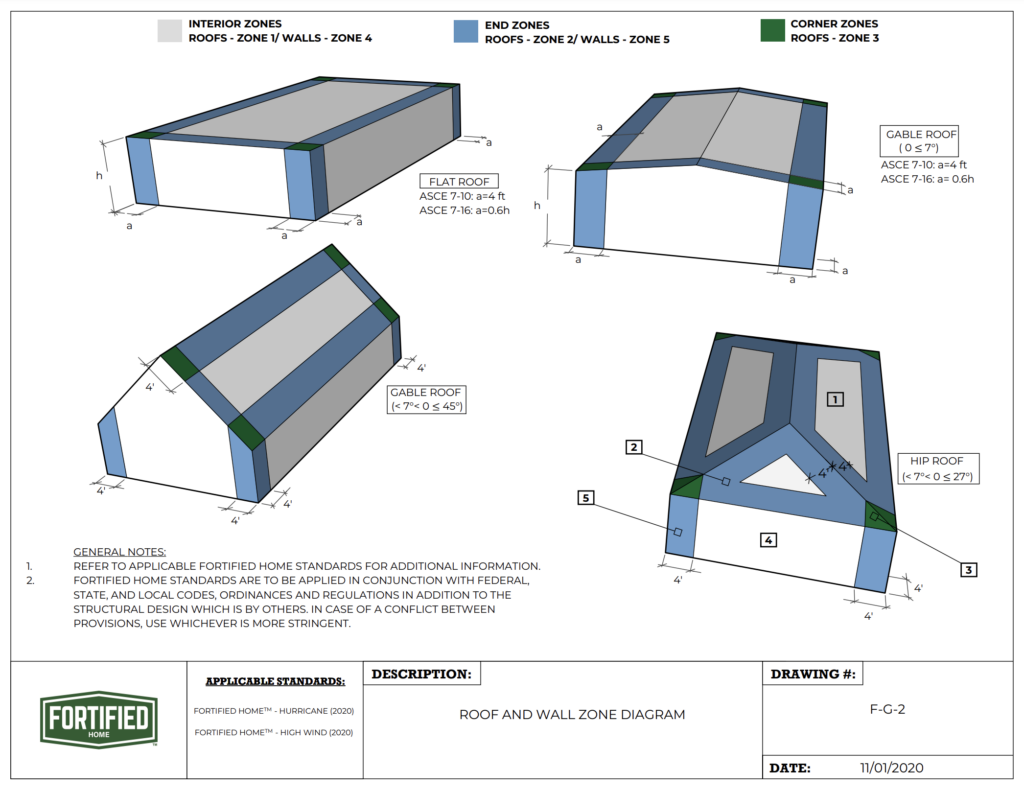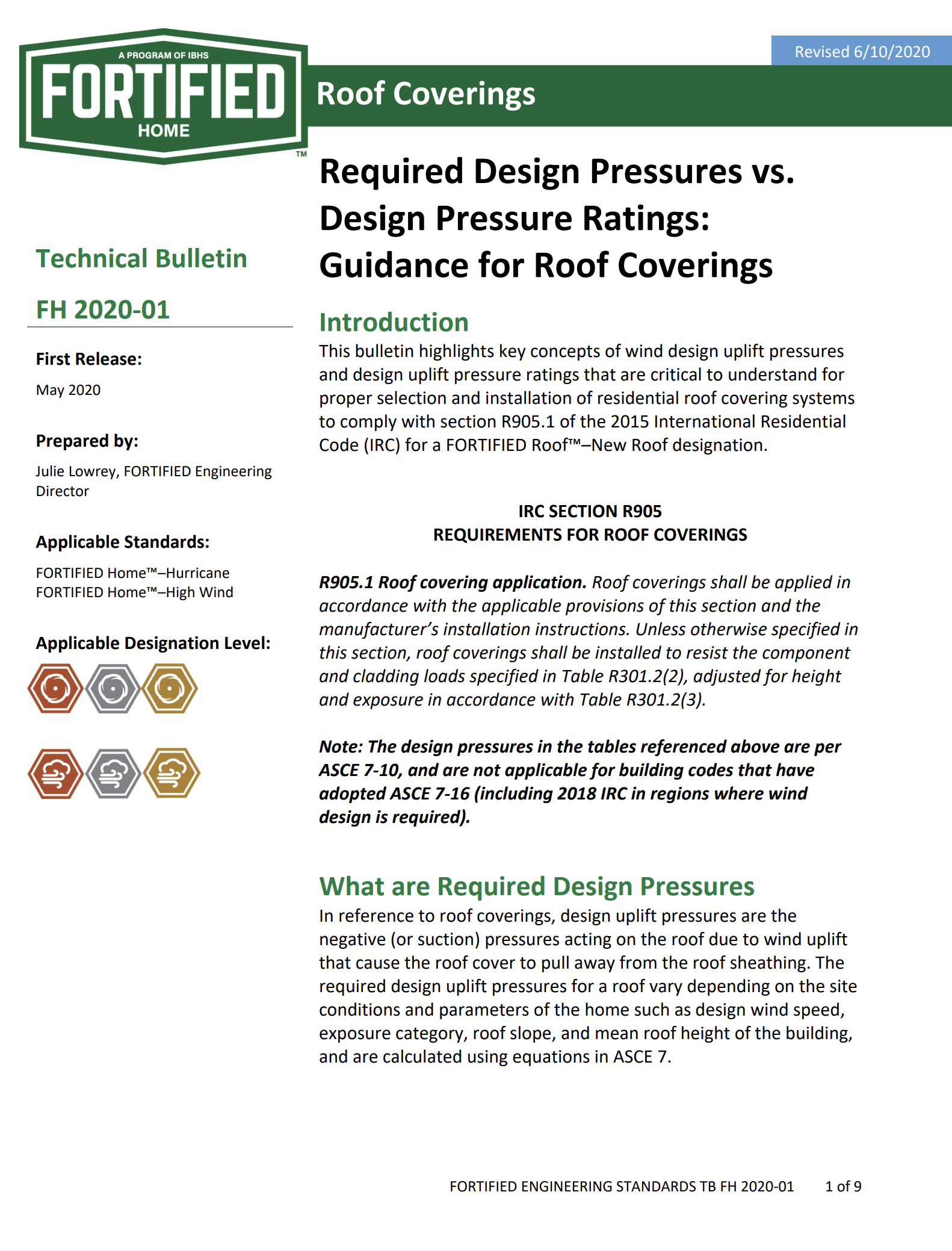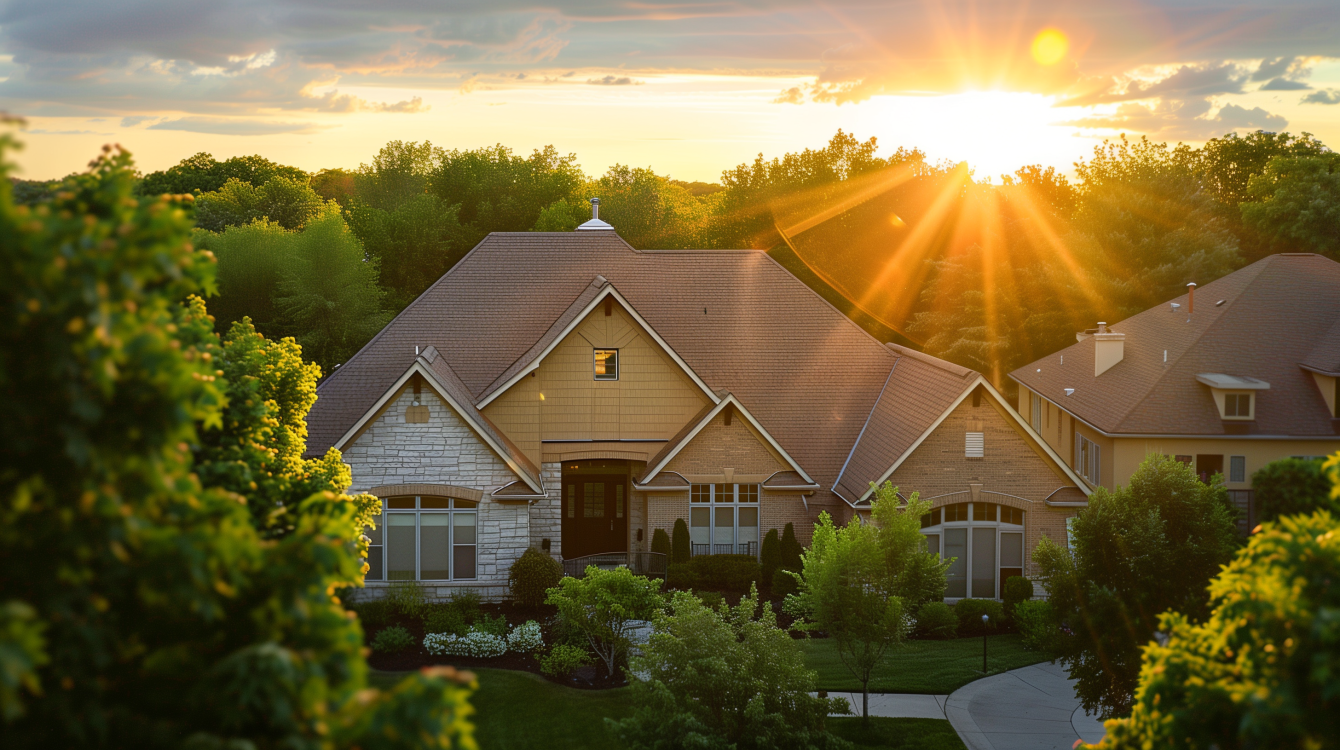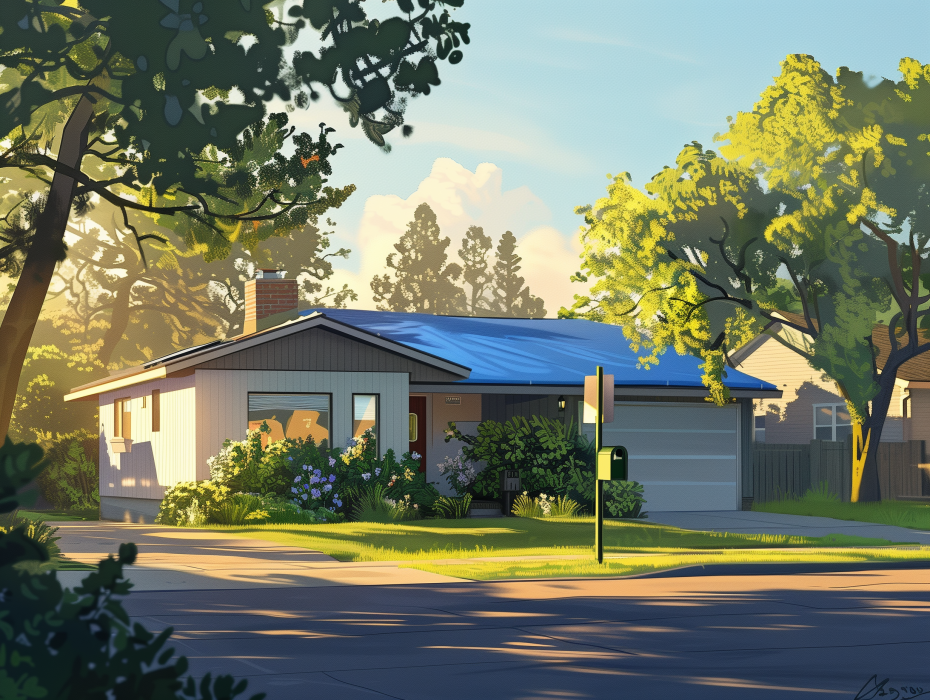Welcome to our latest blog post, where we delve into the intricate world of FORTIFIED Engineering Standards for Roof Coverings. In this technical bulletin, we’ll navigate through the essential concepts and guidelines outlined in Technical Bulletin FH 2020-01. Prepared by Julie Lowrey, the Director of FORTIFIED Engineering, this bulletin provides invaluable insights into understanding design uplift pressures, required design pressures, and the significance of design pressure ratings (DP ratings) in selecting and installing residential roof covering systems.
Introduction:
- Prepared by: Julie Lowrey, FORTIFIED Engineering Director
- First Release: May 2020
- Applicable Standards: FORTIFIED Home™–Hurricane, FORTIFIED Home™–High Wind
- Applicable Designation Level: Revised 6/10/2020
IRC SECTION R905 – REQUIREMENTS FOR ROOF COVERINGS
- Roof coverings must adhere to IRC Section R905.1 and manufacturer’s instructions.
- Installation should ensure resistance to component and cladding loads specified in Table R301.2(2).
- Adjustments for height and exposure must be made in accordance with Table R301.2(3).
- Design pressures in the referenced tables are based on ASCE 7-10 standards.
- Note: In regions where ASCE 7-16, including the 2018 IRC, is adopted for wind design, the design pressures may differ from those in ASCE 7-10.
Required Design Pressures
- Design uplift pressures crucial for selecting/installing residential roof covering systems.
- Calculated using ASCE 7 equations based on site conditions (wind speed, exposure, roof slope, etc.).
Design Pressures Vary by Roof Zone

- Zone 1: Interior field areas.
- Zone 2: Roof ends.
- Zone 3: Roof corners.
- Pressures increase from Zone 1 to Zone 3.
Determining Required Design Pressures:
- Use IRC Tables R301.2(2) and R301.2(3).
- FORTIFIED provides tables/tools for assistance.
- Professional engineers can calculate pressures.
Design Pressure Ratings (DP Ratings):
- Indicate maximum uplift pressures a system can resist.
- Obtained from certified reports by recognized organizations.
- Must meet or exceed local code requirements.
Design Pressure Ratings (DP ratings) signify the maximum uplift pressures a tested roofing system can withstand, derived from rigorous testing protocols. Roof cover systems often possess a spectrum of DP ratings corresponding to various tested connection spacings. Typically, closer connection spacings yield higher DP ratings.
Certified reports from recognized organizations such as the Florida Building Code Product Approval, International Code Council Evaluation Service (ICC-ES) Report, Miami-Dade Notice of Acceptance (NOA), and Texas Department of Insurance (TDI) Product Evaluation serve as valid documentation for FORTIFIED purposes.
In cases where DP ratings are not from the aforementioned organizations, they must undergo testing following UL 580, UL 1897, or TAS 125 standards, with a 2.0 safety factor incorporated. Approval by the manufacturer, compliance with local building codes, and acceptance by local building officials are mandatory.
Selecting Roof Covering Systems:
- Compare required design uplift pressures to DP ratings.
- Ensure installation matches tested assembly.
- Different connection spacings may be required in different roof zones.
Steep-Slope Practical Example:
- Follow step-by-step process for selecting appropriate roof cover system.
- Consider wind speed, exposure, roof height, and pitch.
Proper Installation is Key:
- Installation crucial for system performance.
- Comply with attachment requirements for each zone.
- Different connection spacings may be necessary.
Glossary:
- ASCE 7: American Society of Civil Engineers
- UL 580: Standard for Tests for Uplift Resistance of Roof Assemblies
- UL 1897: Standard for Uplift Tests for Roof Covering Systems
- TAS 125-03: Florida Building Code, Testing Application Standard 125
As we conclude our exploration into FORTIFIED Engineering Standards for Roof Coverings, it’s evident that meticulous attention to detail and adherence to industry guidelines are paramount in safeguarding homes against the forces of nature. From understanding required design pressures to selecting roof covering systems with adequate DP ratings, every step plays a crucial role in fortifying residential structures.
For immediate service or consultation, you may contact us at Allied Emergency Services, INC.
Contact Information:
- Phone: 1-800-792-0212
- Email: Info@AlliedEmergencyServices.com
- Location: Serving Illinois, Wisconsin, and Indiana with a focus on the greater Chicago area.
If you require immediate assistance or have specific questions, our human support is readily available to help you.
Disclaimer: This article is intended for informational purposes only. For professional advice, consult experts in the field.










